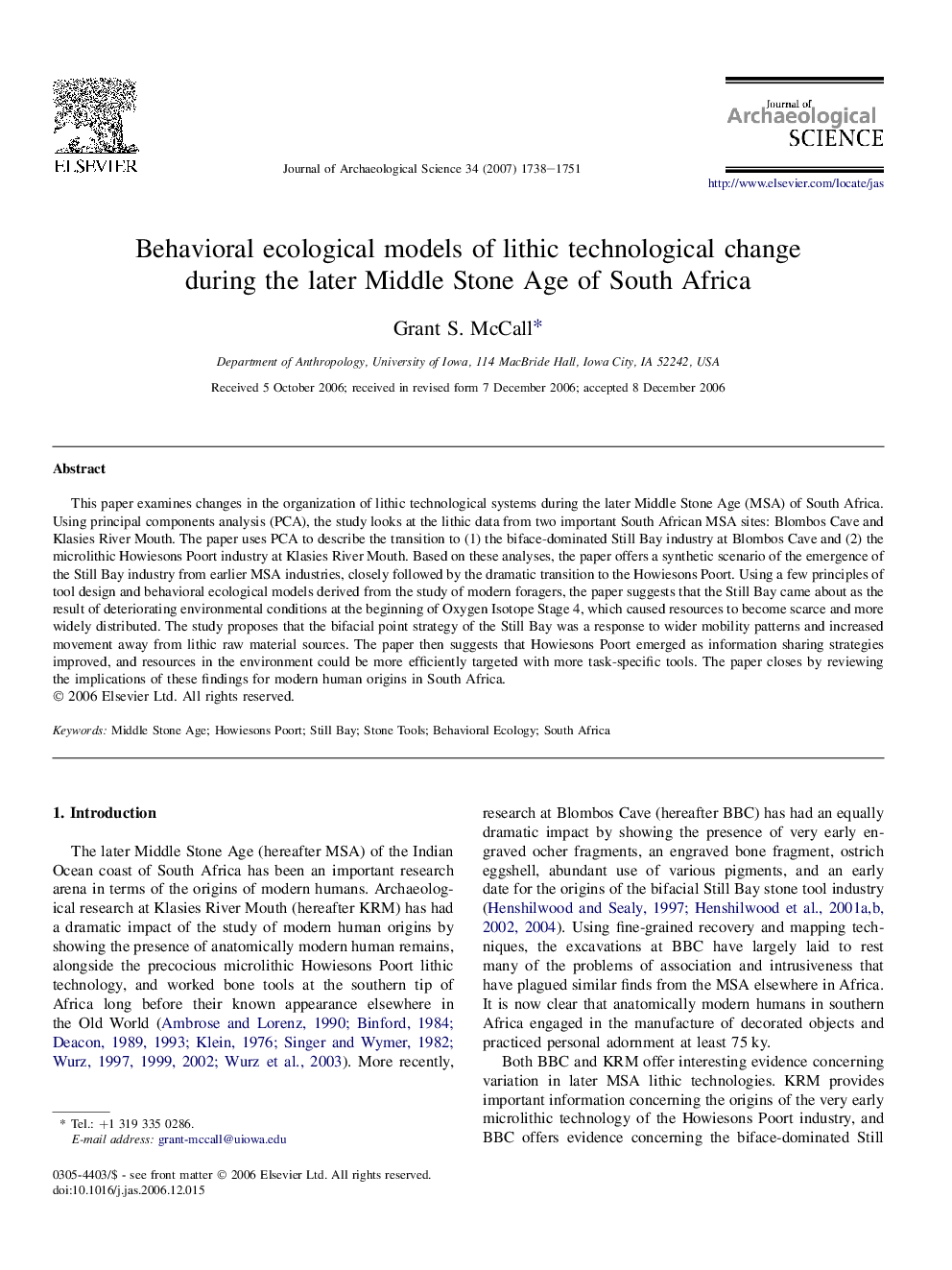| Article ID | Journal | Published Year | Pages | File Type |
|---|---|---|---|---|
| 1036373 | Journal of Archaeological Science | 2007 | 14 Pages |
This paper examines changes in the organization of lithic technological systems during the later Middle Stone Age (MSA) of South Africa. Using principal components analysis (PCA), the study looks at the lithic data from two important South African MSA sites: Blombos Cave and Klasies River Mouth. The paper uses PCA to describe the transition to (1) the biface-dominated Still Bay industry at Blombos Cave and (2) the microlithic Howiesons Poort industry at Klasies River Mouth. Based on these analyses, the paper offers a synthetic scenario of the emergence of the Still Bay industry from earlier MSA industries, closely followed by the dramatic transition to the Howiesons Poort. Using a few principles of tool design and behavioral ecological models derived from the study of modern foragers, the paper suggests that the Still Bay came about as the result of deteriorating environmental conditions at the beginning of Oxygen Isotope Stage 4, which caused resources to become scarce and more widely distributed. The study proposes that the bifacial point strategy of the Still Bay was a response to wider mobility patterns and increased movement away from lithic raw material sources. The paper then suggests that Howiesons Poort emerged as information sharing strategies improved, and resources in the environment could be more efficiently targeted with more task-specific tools. The paper closes by reviewing the implications of these findings for modern human origins in South Africa.
